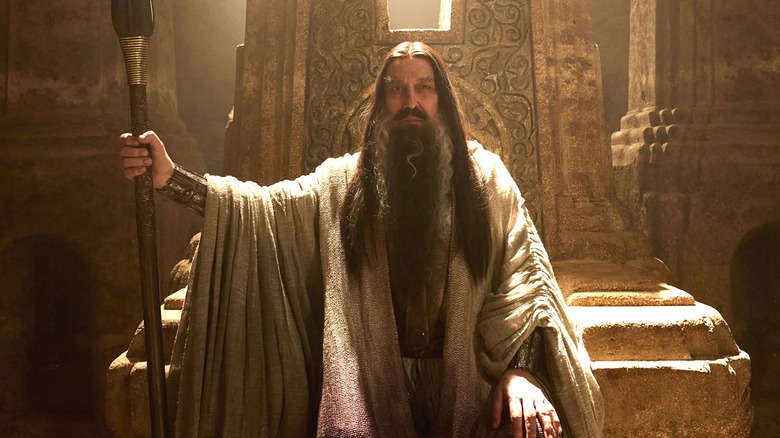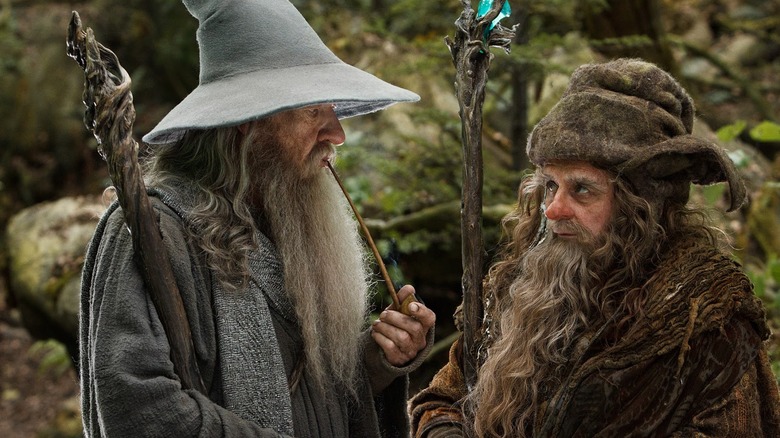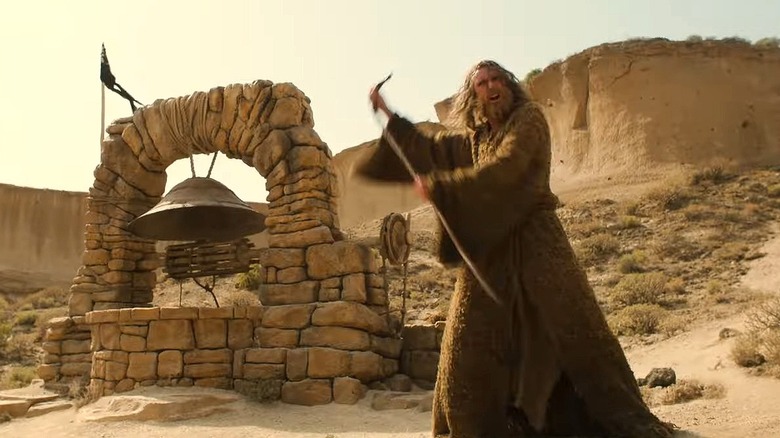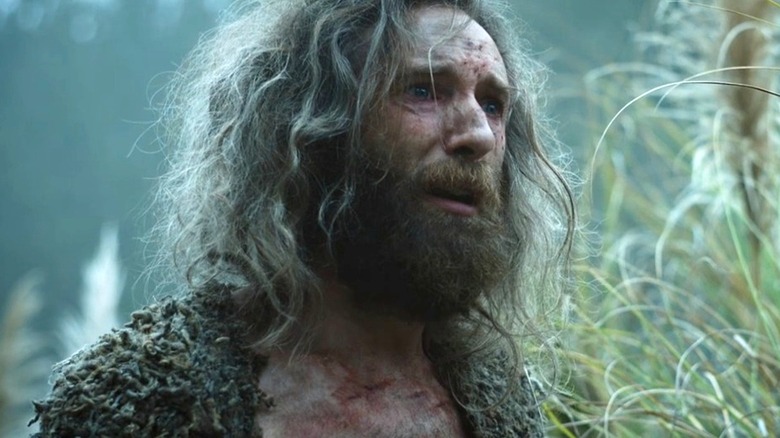How Many Wizards Are In Lord Of The Rings & Who Are They?
There are five named Wizards in J.R.R. Tolkien's writings: Saruman, Gandalf, Radagast, Alatar, and Pallando. We say "named," because in the book "Unfinished Tales," which has many different drafts and interactions of Tolkien's writings, the author describes the Order of the Wizards, stating, "Of this Order the number is unknown; but of those that came to the North of Middle-earth, where there was most hope [...] the chiefs were five." Saruman reinforces this concept with proper noun usage in "The Two Towers," when he accuses Gandalf of wanting the staffs of "the Five Wizards."
This clarification and use of the uppercase is important. After all, wizards are nothing new in fantasy storytelling. Tolkien's Wizards are different, though. The five named Wizards are a unique group of individuals who are singularly created by putting specially chosen Maiar (basically angelic spirits) into physical bodies. Once in this incarnate and limited form, they are sent to Middle-earth and tasked with missions, all of which focus on resisting Sauron. We don't know what exactly happens to the Wizards after their assignments are either complete or they have failed, but presumably they cease to exist in their embodied state, returning to their Maiar form. This unique makeup means the Wizards cannot reproduce, train, or otherwise "make" more of their kind.
Tolkien explains in the book "Unfinished Tales" that the translation "Wizard" is useful in the sense that it indicates wisdom. However, he adds that the term "is not perhaps happy, since the Heren Istarion or 'Order of Wizards' was quite distinct from the 'wizards' and 'magicians' of later legend." Tolkien's writings also indicate that these Wizards have varying power levels, with Gandalf appearing as one of the more timid of the brood despite having the greatest power.
What Wizards are in The Hobbit and The Lord of the Rings?
Okay, so of the Five Wizards, which ones do we meet in Tolkien's quartet of hallmark books, "The Hobbit" and "The Lord of the Rings" trilogy? Gandalf the Grey shows up within a few pages of "The Hobbit" and remains busily involved in everyone's business throughout all four novels. However, while he mentions other Wizards, he's the only one to appear in "The Hobbit." Peter Jackson expanded this to include Radagast the Brown and Saruman the White in his movie trilogy as well (which is reasonable, since they're both operating on the edge of the original story.)
Once we get to "The Lord of the Rings," all three of those Wizards are actively involved in the book narrative. And, again, Gandalf is everywhere. Saruman is a principal villain, too, right to the end. Radagast shows up for one brief but key interaction in "The Fellowship of the Ring." In the movies, ironically, Radagast is cut, but the other two are heavily involved, even if Saruman's later misdeeds in the books are also axed from the film's script.
The Blue Wizards are never fully developed as characters
That leaves Middle-earth's Two Blue Wizards out of the equation — but that's not a surprise, as Tolkien never got very far with their story. In a letter written in 1958, he explained, "I really do not know anything clearly about the other two [wizards] – since they do not concern the history of the N[orth].W[est]. I think they went as emissaries to distant regions, East and South, far out of Númenórean range: missionaries to 'enemy-occupied' lands, as it were." In other writings, he clarifies that they head east with Saruman into the region of Rhûn. While Saruman returns, though, the fate of the two Blues remains shrouded in mystery.
The letter went on to elaborate that, if Tolkien had to guess, he would say they probably failed in Saruman-like fashion. "I suspect," he said, "they were founders or beginners of secret cults and 'magic' traditions that outlasted the fall of Sauron."
This isn't where the Blue Wizard narrative stops, however. Much later in life, Tolkien shifted his ideas on the powerful pair, saying that they actually were named Morinehtar and Rómestámo and that they played critical roles in stopping Sauron's rise in the East, where he is viewed as a god-like ruler for millennia of Middle-earth history. He concludes this brief retcon of the Blue Wizard story by saying, "They must have had very great influence on the history of the Second Age and Third Age in weakening and disarraying the forces of East ... who would both in the Second Age and Third Age otherwise have ... outnumbered the West." So, depending on what you read, the Blue Wizards are either failed emissaries or critical leaders of the Sauron resistance. In either case, they barely factor into Tolkien's writings.
What about the Rings of Power story?
Amazon Studios' "The Rings of Power" series has two Wizards in it, too. Season 1 introduced "The Stranger" (Daniel Weyman), an unnamed fellow who falls from the sky and doesn't know who he is. By Season 2, he wanders east, into Rhûn, where we bump into another Dark Wizard (Ciarán Hinds), who is leading a cult. While the identity of the latter individual remains a mystery by the end of Season 2, the "Stranger" is revealed in the season finale, as long suspected, to be Gandalf.
Although the Dark Wizard has Saruman-like patches of black in his beard and has his followers use blood in ceremonies by cutting their palms, showrunners JD Payne and Patrick McKay have more or less denied that this is the same character who is later corrupted by Sauron. But the fact that he is in Rhûn points heavily toward a Blue Wizard storyline. The cult worship is also very Blue Wizard, which may point to how Payne and McKay plan to incorporate the Blue Wizards into their Second Age story.



